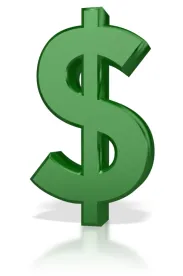Most people agree that a “bond” is a financial instrument pursuant to which a creditor (holder of the bond) lends money to a borrower (the issuer of the bond) over a specified period of time in exchange for a periodic interest payment. However, although I occasionally see headlines about green bonds being issued, it was not clear to me what made a bond “green”. Since I like to drink clean water and breathe clean air, I thought it would be worth looking into.
In a very general sense, a green bond is a bond whose proceeds are used for environmentally friendly projects. Apparently, the World Bank began issuing green bonds in 2008 to fund climate related and environmental projects. As the market for green bonds began to grow, so did the confusion as to exactly what allows a bond to be color coded “green”. (In other words, the color of the bond was in the eye of the beholder). Accordingly, in 2013, in an attempt to clarify what types of projects could be funded by green bonds, a group of banks came up with the Green Bond Principles (“GBP”). The GBP explain that the following types of projects, which is a nonexclusive list, may be funded with green bonds:
– Renewable energy
– Energy efficiency (including efficient buildings)
– Sustainable waste management
– Sustainable land use (including sustainable forestry and agriculture)
– Biodiversity conservation
– Clean transportation
– Sustainable water management (including clean and/or drinking water)
– Climate change adaptation
In addition, in the interest of educating the public, the World Bank has developed a guidebook that is intended to serve as a tool for those interested in “better understanding the nature of green bonds”. (Unclear whether the pun was intentional or not). Much of the information in this blog post was obtained from such guidebook.
Green bonds constitute a growing segment of the bond market. The first green bonds were issued by banks and governmental units. However, many corporations and utilities have also entered the market. According to the World Bank guidebook, approximately $4.0 billion of green bonds were issued worldwide in 2010. In 2014, approximately $37 billion of green bonds were issued worldwide.
The above statistics are from across the globe. Let’s now talk about what is happening in the United States.
(1) State and Local Government Issuers: The State of Massachusetts has issued two sets of green bonds, one in 2013 and one in 2014. In both instances, the bonds were general obligation bonds, but the proceeds were earmarked for specific environmental projects such as those designed to promote clean water, energy efficiency and land remediation.
(2) Utilities. In 2014 and 2015, the District of Columbia Water and Sewer Authority (“DC Water”) issued green bonds in order to help fund its Clean Rivers Project. Basically, the Clean Rivers Project is intended to reduce the amount of sewage that flows into the Anacostia and Potomac Rivers. DC Water is also planning to issue an additional $100 million of green bonds this month as part of the same project. In addition, late last year, the San Francisco Public Utilities Commission issued green bonds in order to upgrade its water and sewer system.
(3) Private Sector. In the private sector, Regency Centers Corporation issued green bonds in 2014 to finance construction of a shopping mall that meets certain environmentally friendly standards, and Bank of America issued green bonds in 2013 and 2015 in order to finance wind, solar and geothermal energy projects.
In March of 2016, Moody’s Investor Services published its Green Bonds Assessment methodology (GBA) which is intended to help investors evaluate an issuer’s use of proceeds for and reporting on environmental projects financed by green bonds. In addition, Standard and Poor’s Financial Services recently established an S&P Green Bond Index designed to track the global green bond market.
In sum, anyone planning on investing in green bonds has a little extra homework to do. In addition to evaluating whether or not a bond is a good investment based upon both the bond’s characteristics (i.e., interest rate, maturity date, price, etc.) and the credit quality of the issuer, a potential investor in a green bond will likely be interested in finding out exactly what the proceeds of such green bonds will be used for and the project’s projected environmental impact. Any such potential investor, however, should make sure they use recycled paper for their notes.




 />i
/>i

